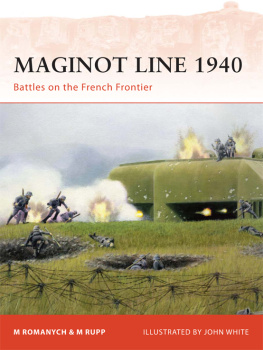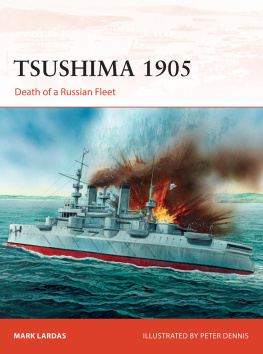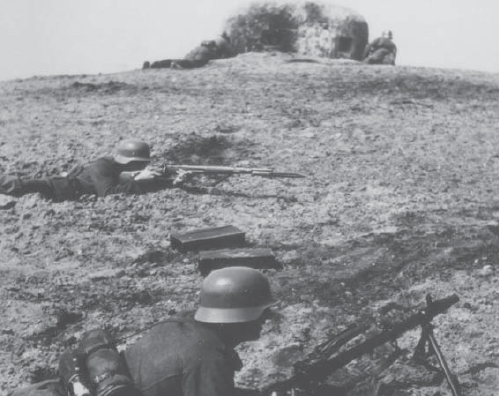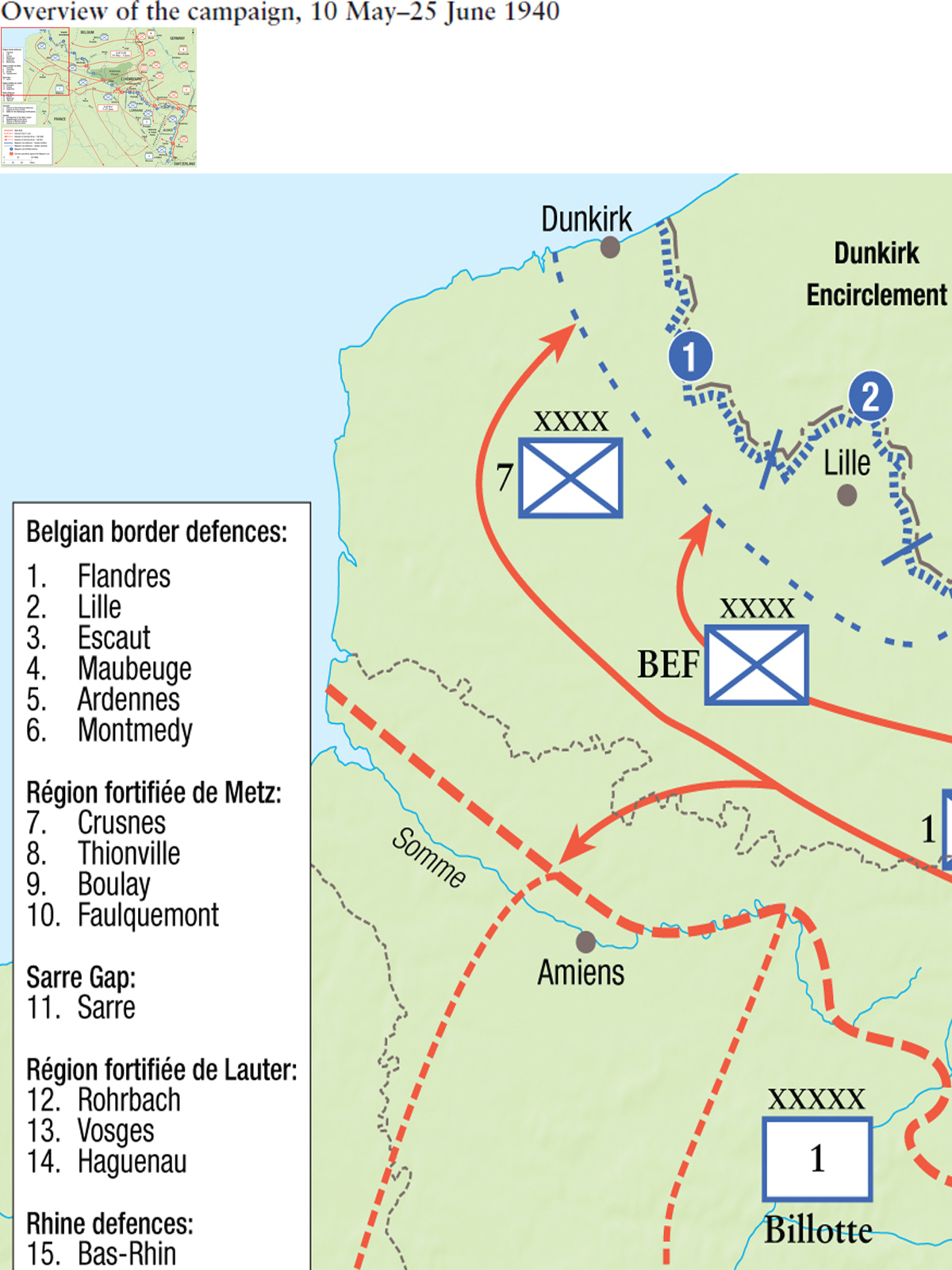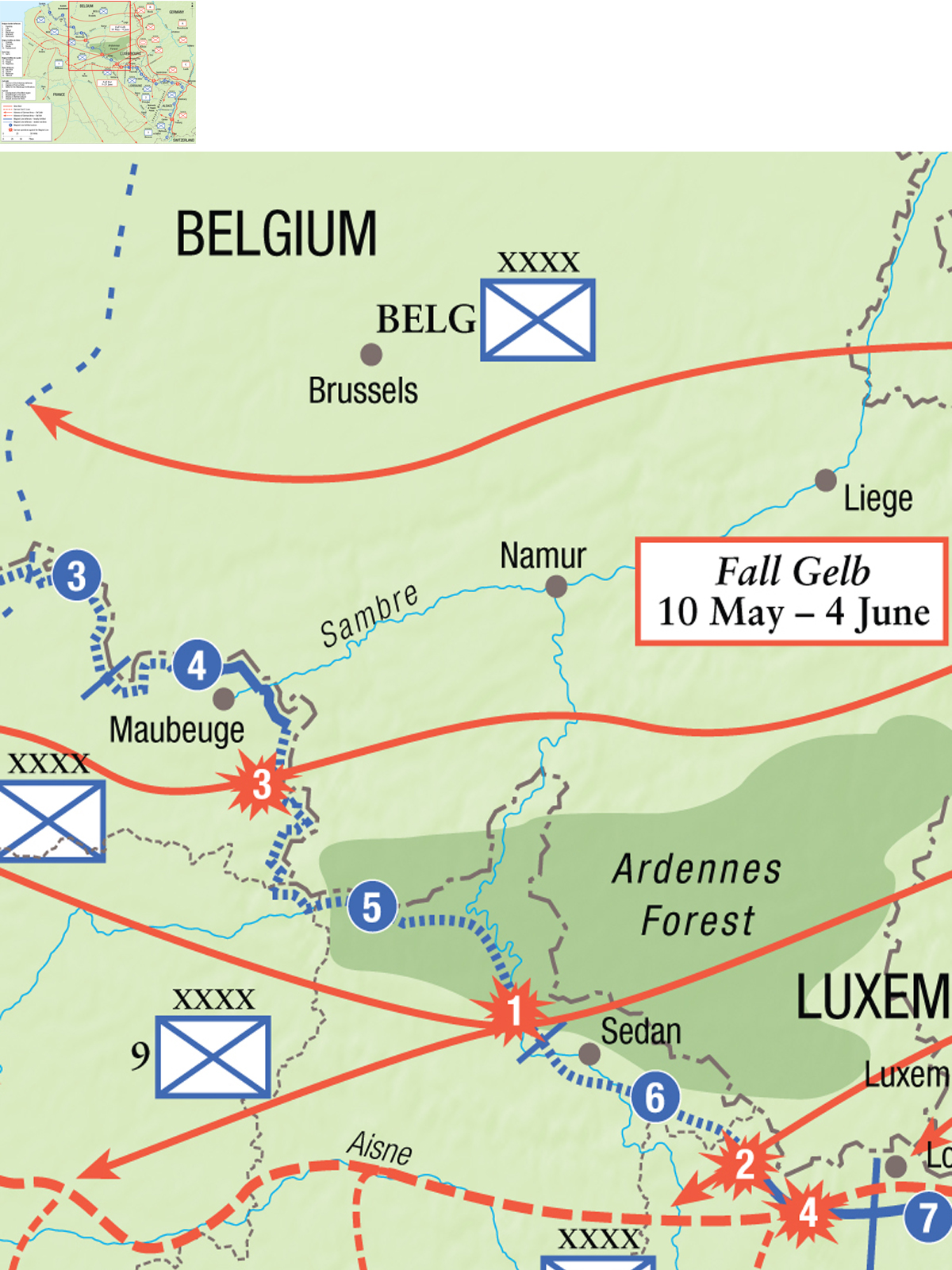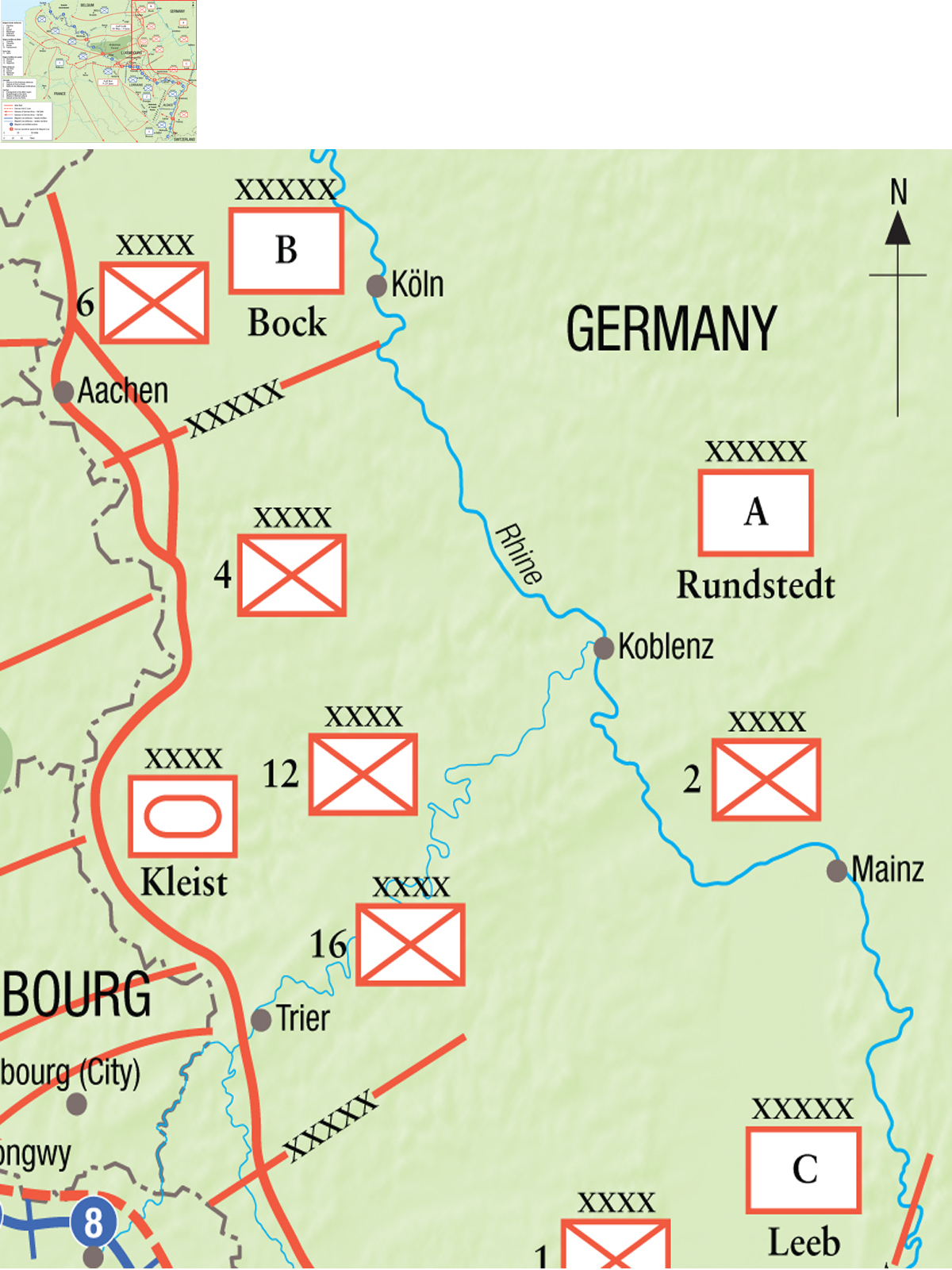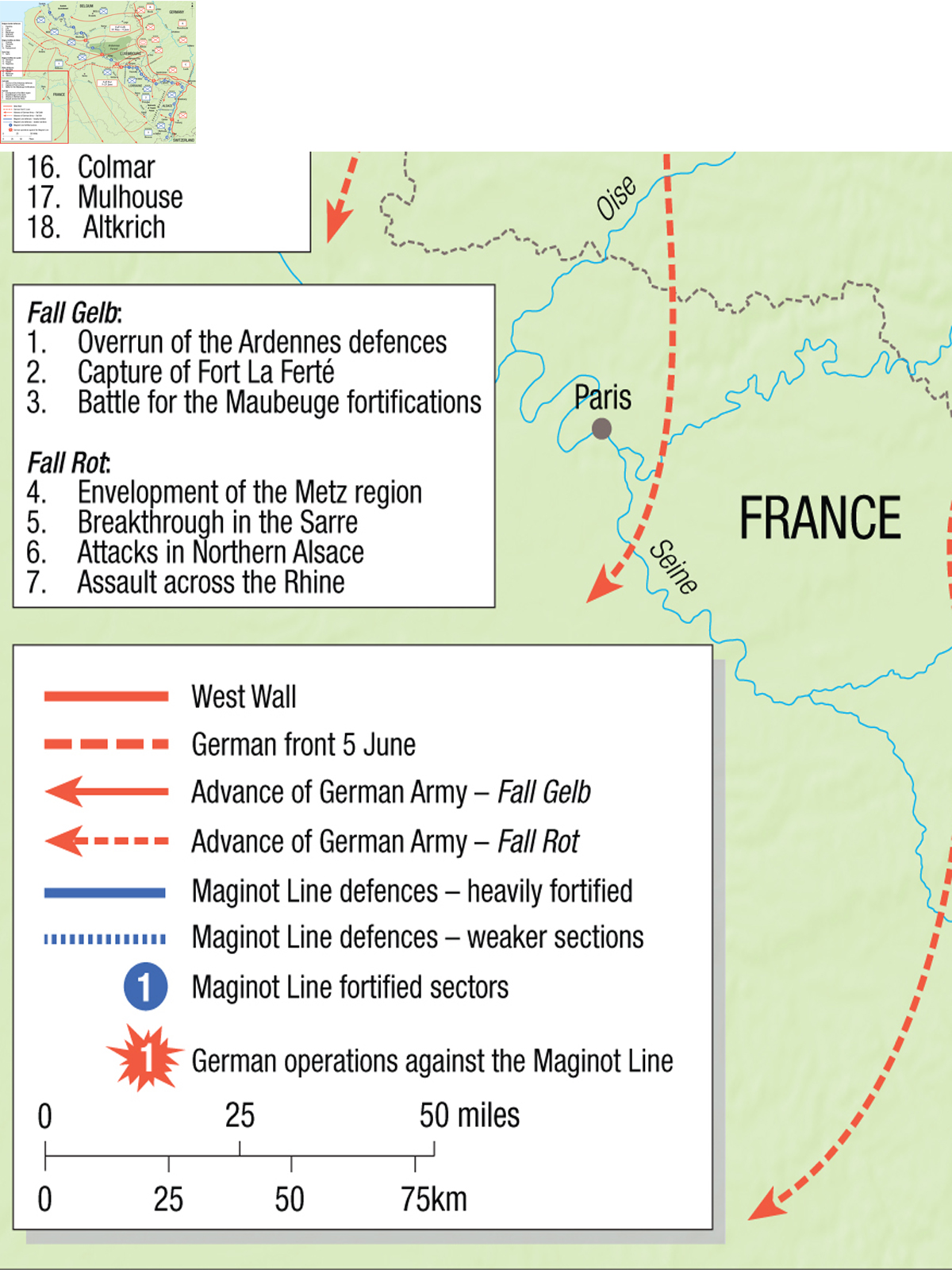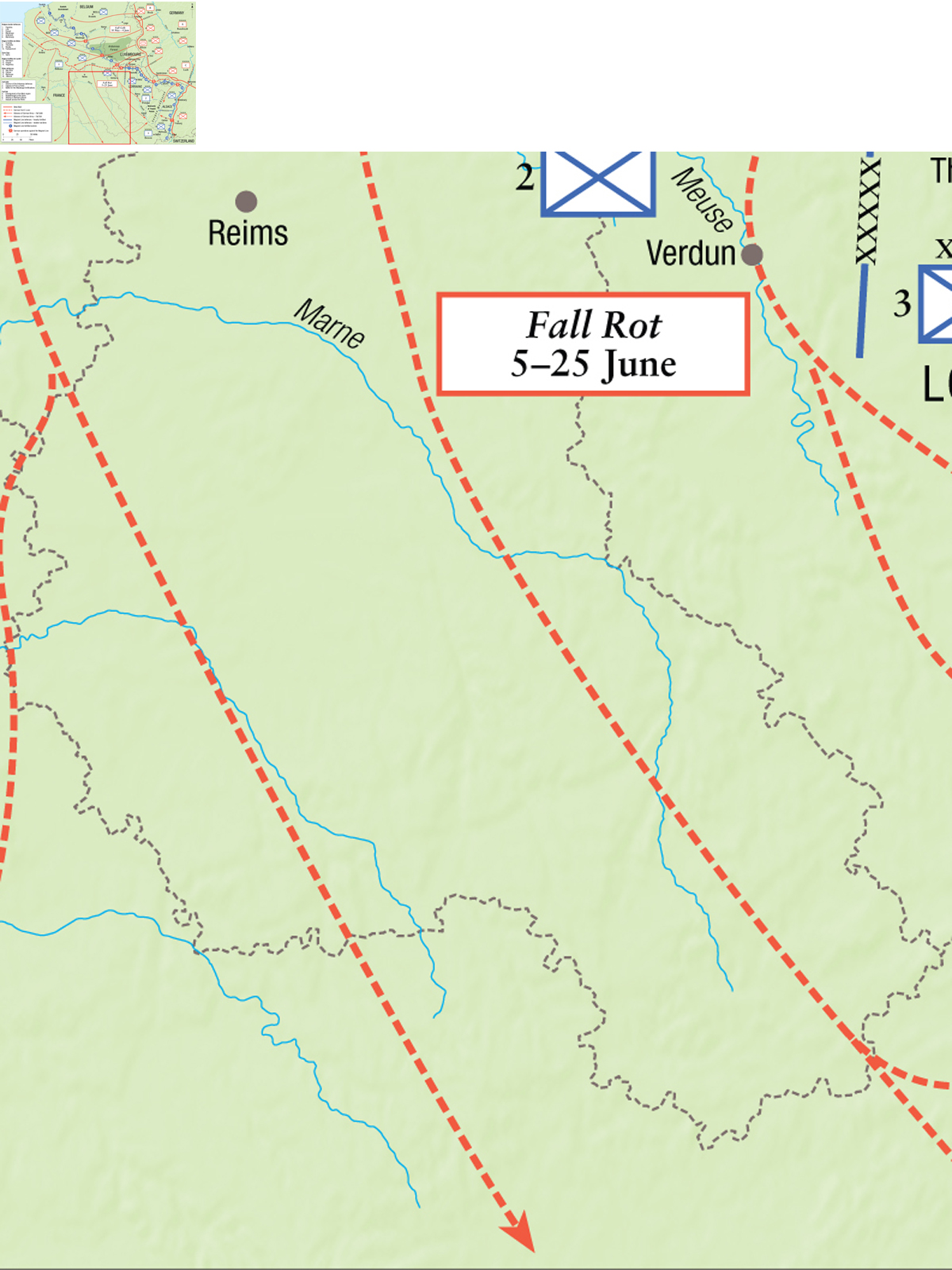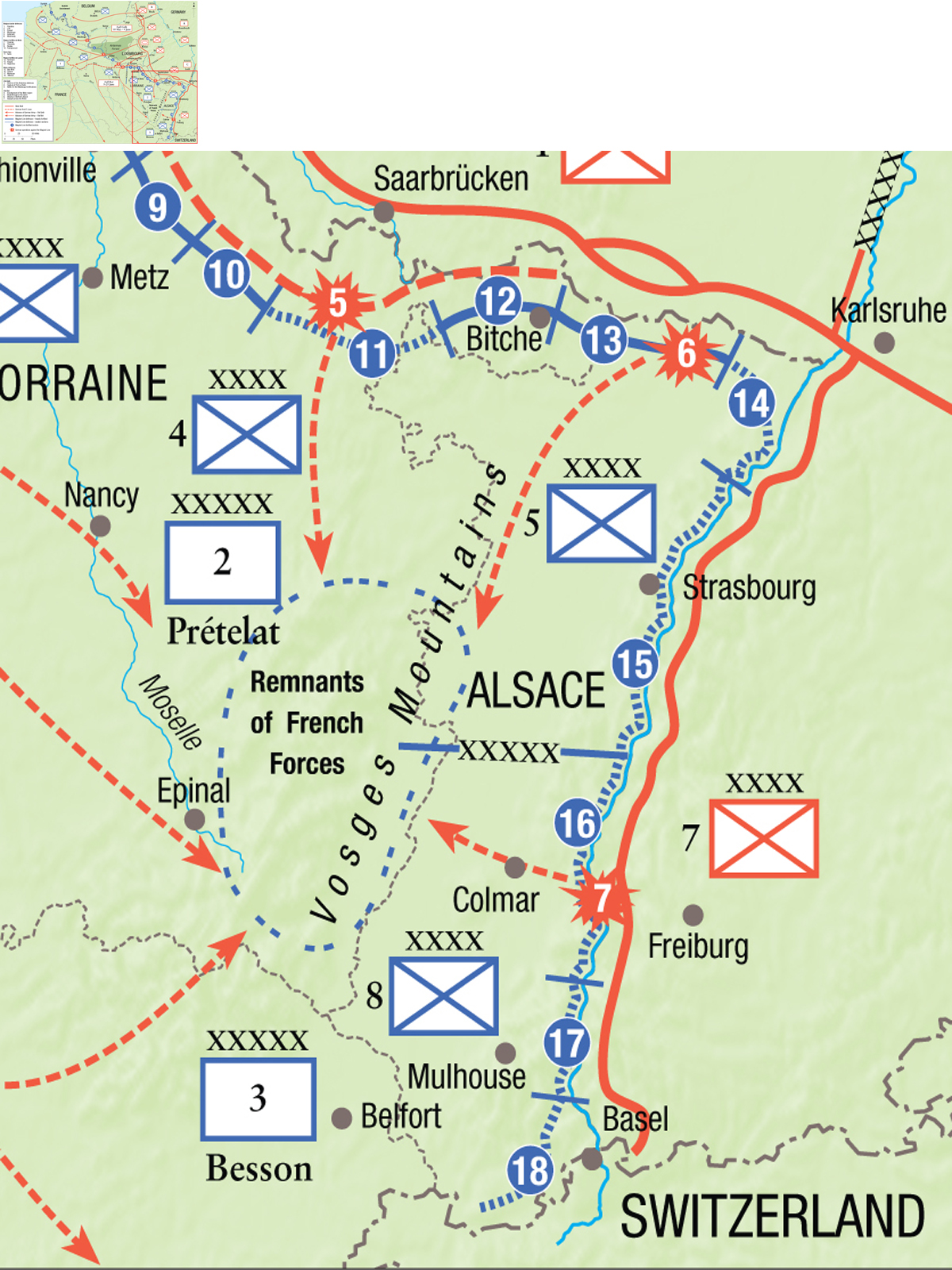CAMPAIGN 218
MAGINOT LINE 1940
Battles on the French Frontier
| M ROMANYCH & M RUPP | ILLUSTRATED BY JOHN WHITE |
Series editors Marcus Cowper and Nikolai Bogdanovic
CONTENTS
INTRODUCTION
In May and June 1940, Germany won a lightning victory in Western Europe, defeating the Allied armies in less than six weeks. Although never decisively engaged in combat, the Maginot Line was central to how both France and Germany prepared for and conducted the campaign. Frances strategy and war plan were built on the idea that the Maginot Line would provide a secure front along the Franco-German border, as well as a base for Allied forces to counter the Wehrmacht offensive through Belgium. To this end, the French Army built fortifications along its northern frontier for ten years, first in Alsace and Lorraine and later along the Belgian border. However, as time and resources ran out, significant portions of the frontier were left weakly fortified, especially in the Ardennes sector. It was a mistake that played into German hands.
For its part, the Oberkommando des Heeres (OKH) understood that to invade France and defeat the French Army, it had to breach the Maginot fortifications. Before the invasion the Wehrmacht committed significant resources to preparations for attack on permanent fortifications. Then, during the campaign, the Germans attacked the Maginot Line in ten separate corps and division level operations. All told, one-third of the Wehrmachts divisions took part in operations against the Maginot Line.
The Wehrmacht conducted its campaign in two phases: Fall Gelb (Plan Yellow), the invasion of the Low Countries and Northern France, and Fall Rot (Plan Red), the invasion of France proper. During Fall Gelb, the Wehrmacht struck the Allied armies at their weakest point the hinge between the mobile forces in central Belgium and the strong permanent fortifications of the Maginot Line in northern Lorraine. With overwhelming combat power, the Panzer formations overran French forces at Sedan and split the Allied front in two. The Panzers then bypassed the remaining fortifications along the Belgian border, which were systematically reduced by infantry and combat engineers. Fall Gelb ended after German forces encircled Allied forces in Belgium and forced their evacuation at Dunkirk.
Several weeks later during Fall Rot, as Panzer formations plunged deep into central France, the Wehrmacht attacked the Maginot Line in Alsace and Lorraine. In battles reminiscent of World War I, infantry supported by heavy artillery conducted large-scale offensives in the Sarre and Upper Rhine regions that divided and isolated the strongest sections of the Maginot Line. These operations resulted in some of the heaviest fighting of the campaign. But, overshadowed by the French Armys collapse and subsequent surrender, these battles are forgotten by history.
CHRONOLOGY
| 1939 |
| 3 September | Britain and France declare war on Germany. |
| 730 September | French Groupe darmes 2 invades German Saarland. |
| 1624 October | German Armeeoberkommando (AOK) 1 counterattacks in the Saarland. |
| 1940 |
| 10 May | Fall Gelb, the German offensive in the west begins. |
| 1215 May | Heeresgruppe C conducts diversionary attacks against the Maginot Line in northern Alsace and Lorraine. |
| 1315 May | Panzergruppe Kleist pierces the border defences at Sedan and Montherm. |
| 1617 May | German AOK 4 overruns border defences east of Maubeuge. |
| 1719 May | 71. Infanterie-Division captures Fort La Fert. |
| 1824 May | German VIII Armeekorps (AK) seizes fortifications in the Maubeuge area. |
| 20 May | Heeresgruppe A reaches the Channel, isolating Allied forces in Belgium. |
| 2226 May | German VIII and XXVII AK seize fortifications in the Escaut sector. |
| 27 May to 3 June | Allied forces evacuate the Dunkirk pocket. |
| 5 June | Fall Rot, German invasion of France begins. |
| 1213 June | French 18e Corps darme abandons fortresses Chesnois, Thonnelle and Vlosnes. |
| 14 June | Infantry divisions of Heeresgruppe B enter Paris. |
| 1415 June | Operation Tiger. German AOK 1 breaks through defences in the Sarre Gap. |
| 1518 June | Operation Kleiner Br. German AOK 7 conducts an assault crossing of the Rhine River. |
| 17 June | XIX AK (mot.) reaches the Swiss border, encircling 500,000 French soldiers in Alsace and Lorraine, 20,000 of them in the Maginot Line. |
| 19 June | The 215. Infanterie-Division pierces the Maginot Line in the Vosges Mountains. |
| 2021 June | The 167. Infanterie-Division seizes forts Bambesch and Kerfent, but fails to take Fort Einseling. |
| 20 June | The 246. Infanterie-Division unsuccessfully attacks fortifications in the Haguenau area. |
| 21 June | The 161. Infanterie-Division unsuccessfully attacks Fortress Fermont and Fort Ferme-Chappy. |
| 21 June | Heeresgruppe C orders a halt to any further infantry assaults against the Maginot Line. |
| 2124 June | The 262. Infanterie-Division captures forts Haut-Poirier and Welschhof. |
| 22 June | The German 95. Infanterie-Division fails to force Fortress Michelsberg to surrender. |
| 22 June | Armistice is signed (to take effect on 25 June). |
| 2225 June | French Groupe darmes 2 surrenders in the Vosges Mountains. |
| 25 June | Hostilities formally end. |
| 27 June to 4 July | Last Maginot Line fortress troops surrender and leave their fortifications. |
ORIGINS OF THE CAMPAIGN
The French Government built the Maginot Line in the 1930s to guard against a German invasion. Its purpose was to halt a German attack long enough for the French Army to mobilize and then to serve as a base for a counteroffensive. Construction was a massive undertaking that occurred in several distinct cycles prompted by changes in the diplomatic situation between France and Germany.
The first and strongest sections of the Maginot Line were built in northern Alsace and Lorraine from 1930 to 1936. Two lines of permanent fortifications were constructed along the German border, one from Longuyon to the Sarre Valley and another from the city of Bitche to the Rhine River. Designated as the Rgions fortifies de Metz and de la Lauter respectively, these heavily fortified fronts were designed to stop a direct attack from Germany into Alsace and Lorraine. In between the Rgions fortifies de Metz and de la Lauter, a 50km (31-mile) stretch known as the Sarre Gap was left unfortified because the neighbouring Saarland area of Germany was still under French control. Concurrently, several lines of concrete casemates were built along the Rhine River from the Haguenau area south to the Swiss border. These, the Rhine defences, were designed to secure eastern Alsace from a cross-Rhine attack. Because Belgium, an ally, was also building fortifications along its border with Germany, the French Army left the Franco-Belgian frontier unfortified except for two short lines of casemates constructed in the Raismes Forest near Valenciennes and the Mormal Forest near Maubeuge. These defences were meant to provide security positions for French forces in case of a German invasion of Belgium.
Next page
